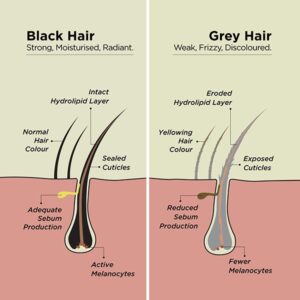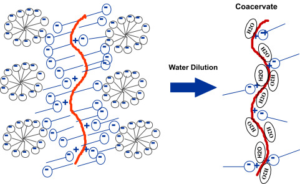Table of Contents
- Introduction
- Hair Growth: A Complex and Fascinating Process
- Basics of Hair Growth
- Hair Follicles: The Starting Point of Growth
- The Power of Keratin: The Building Blocks
- The Hair Growth Cycle: An Overview
- Hair’s Dynamic Lifecycle
- Body-Wide Coverage: Hair Beyond the Scalp
- Scalp Significance: A Hub of Hair Growth
- Genetic Influence: The Blueprint of Hair
- The Science Simplified: How Hair Grows
- Hair Follicle as a Factory
- Anagen Phase: Growth Phase
- Catagen Phase: Transition Phase
- Telogen Phase: Resting Phase
- Exogen Phase: Shedding Phase
- Dynamic Nature of the Hair Cycle
- Other Factors Influencing Hair Growth
- Genetics: The Blueprint of Your Hair
- Hormones: Orchestrators of Hair Growth
- Nutrition: Fueling Hair from Within
- Age: The Passage of Time and Hair Growth
- Stress: Unraveling the Impact on Hair
- Health Conditions: Affects on Hair’s Vitality
- Common Hair-Related Problems and Their Medical Treatments, Including Ayurvedic Approaches
- Hair Loss (Alopecia) and its Treatments
- Dandruff: Causes and Remedies
- Hair Thinning: Causes and Solutions
- Breakage and Split Ends: Preventive Measures
- Scalp Conditions: Managing Irritation and Inflammation
- Premature Greying: Factors and Solutions
- Excessive Hair Fall: Identifying Causes and Remedies
- Trichotillomania: Understanding and Managing Hair Pulling
- Male and Female Pattern Baldness: Addressing Genetic Hair Loss
- Conclusion: The Remarkable Journey
- Reflecting on the Science of Hair Growth
- Empowerment through Understanding
- The Ongoing Dance of Cells and Hormones
Introduction :
By exploring the intricate science behind hair growth, understanding the factors influencing it, and delving into both Ayurvedic and conventional treatments for common hair-related problems, we gain a comprehensive understanding of how to care for our hair’s health and beauty.

Hair Growth: A Complex and Fascinating Process
Hair growth is a complex and fascinating process that occurs all over our bodies. It’s a natural phenomenon that has captivated human curiosity for centuries. Let’s explore the science behind hair growth, from the basics to the intricate details that drive this remarkable biological process.
Hair growth is a cyclical process that involves the growth, rest, shedding, and renewal of individual hair strands. Hair is made up of a protein called keratin, which is produced in hair follicles embedded in the skin’s outer layer. These hair follicles are responsible for generating new hair cells and facilitating the journey of each strand from beneath the skin’s surface to the outside world.
The Hair Growth Cycle : An Overview
Hair growth is a captivating biological process that takes place within our bodies, generating the lush manes and intricate hairstyles we often take for granted. Let’s embark on a journey into the fundamental principles of hair growth and explore the captivating intricacies that underlie this natural phenomenon.
1. Hair Follicles: The Starting Point of Growth
Think of hair follicles as tiny, specialized factories nestled beneath the skin’s surface. These follicles are the foundation of hair growth. Scattered across our bodies (except on palms, soles, and a few areas), these follicles are like miniature workshops where hair creation takes place.
2. The Power of Keratin: The Building Blocks
The structural basis of our hair lies in a protein called keratin. Picture keratin as the bricks used to construct a building. Hair follicles diligently manufacture these keratin building blocks, weaving them together to shape hair strands. This protein lends the hair its strength, resilience, and texture.
3. The Hair Growth Cycle: A Continuous Journey

Hair growth is a perpetual cycle comprising four distinct phases:
- Anagen Phase (Growth Phase): This dynamic phase is marked by active hair growth. Follicles work relentlessly, producing fresh cells that coalesce to form the hair strand. Lasting for years, the anagen phase largely determines the length of your hair.
- Catagen Phase (Transition Phase): Following the growth phase, a brief transition occurs. Follicles take a breather from producing new cells, and the hair strand stops elongating.
- Telogen Phase (Resting Phase): During this interlude, the hair strand takes a hiatus within the follicle. No new cells are created, and the older hair gets ready to shed.
- Exogen Phase (Shedding Phase): As the old hair reaches the end of its journey, it gracefully departs to make way for new growth. Simultaneously, a new hair cell emerges to fill the vacancy left by its predecessor.
4. Hair’s Dynamic Lifecycle
Remarkably, not all hair strands on your body follow the same rhythm. Each strand can find itself in a different phase of the cycle simultaneously. This dynamic dance of phases explains why you might observe some hairs falling out while others are sprouting anew.
5. Body-Wide Coverage: Hair Beyond the Scalp
While hair growth is prominently associated with our heads, it extends across our bodies, albeit often in less visible forms. Body hair serves various functions, including shielding the skin and aiding in temperature regulation.
6. Scalp Significance: A Hub of Hair Growth
The scalp, the skin covering our craniums, plays a pivotal role in the hair growth saga. It serves as a hotspot for hair follicles, with a higher density compared to other body regions. Consequently, our scalps harbor a greater number of hair follicles, contributing to the abundance of hair that characterizes this region.
7. Genetic Influence: The Blueprint of Hair
Genetics wield considerable influence over our hair’s growth patterns. The genetic blueprint handed down by our parents shapes various hair attributes, including thickness, texture, color, and more. Whether you sport flowing locks or delicate strands, it’s all written in your unique genetic code.
The Science Simplified: How Hair Grows

Imagine your hair follicle as a tiny factory nestled within your skin. It’s a bustling hub of activity where new hair cells are produced. These cells then merge to form a hair strand. The process is like a conveyor belt, where cells move from the production line to the surface of your skin, becoming the hair you see.
During the anagen phase, the factory is in full swing. It’s like the prime time of production, with cells being churned out rapidly. As the strand grows, it’s essentially made up of layers of cells that have matured and compacted. The outermost layer, the cuticle, acts as a protective shield, like the armor of a medieval knight.
Once the anagen phase ends, the factory takes a break. This is the catagen phase, a bit like a siesta for the factory workers. The hair strand is no longer growing, and the factory shifts its focus.
Then comes the telogen phase – a hair sabbatical. The old hair strand takes a well-deserved rest while the factory gears up for the next cycle. It’s as if the factory is undergoing maintenance, ensuring it’s ready for the next round of production.
Finally, during the exogen phase, the old hair strand is like a ship setting sail. It gracefully bows out, making way for the new hair that’s been in the works. It’s a bit like a relay race, where one runner passes the baton to the next.
Other Factors Influencing Hair Growth :
While the hair growth cycle follows this fascinating pattern, it’s influenced by various factors:
- Genetics: Your genes play a significant role in determining how long your hair will grow and how quickly it will cycle through the phases.
- Hormones: Hormones, such as testosterone and estrogen, influence hair growth. That’s why changes in hormone levels during puberty, pregnancy, and menopause can affect hair thickness and growth.
- Nutrition: Proper nutrition is essential for healthy hair growth. Nutrients like protein, vitamins, and minerals support the hair follicles’ activity.
- Age: As we age, the hair growth cycle may slow down, leading to thinner and slower-growing hair strands.
- Stress: Stress can disrupt the hair growth cycle, potentially leading to excessive shedding or even temporary hair loss.
- Health Conditions: Certain health conditions, like thyroid disorders or alopecia, can affect hair growth and lead to changes in the hair cycle.
Common Hair-Related Problems and Their Medical Treatments, Including Ayurvedic Approaches :
Our hair is not only a symbol of beauty but also an indicator of our overall well-being. Unfortunately, various factors can lead to hair-related problems, affecting both its appearance and health. Let’s explore some of the most common hair issues and effective treatments, including Ayurvedic approaches, to address them.

1. Hair Loss (Alopecia):
Hair loss is a concern that affects individuals of all ages and genders. It can be caused by genetics, hormonal imbalances, medical conditions, and lifestyle factors. Ayurveda offers holistic remedies to address hair loss:
- Amla (Indian Gooseberry): Rich in vitamin C and antioxidants, amla nourishes hair follicles and promotes hair growth.
- Bhringraj: This herb is known for its rejuvenating properties and is used in oils and masks to stimulate hair growth.
- Bhringamalakadi Oil: Ayurvedic oil containing bhringraj and other herbs can help strengthen hair and prevent hair loss.
- Medications: Over-the-counter minoxidil and prescription finasteride can help slow down hair loss and promote regrowth.
- Hair Transplant: Surgical procedures like hair transplant involve transferring hair follicles from one part of the body to the balding area.
- Low-Level Laser Therapy (LLLT): LLLT devices stimulate hair follicles and promote hair growth.
2. Dandruff:
Dandruff is a common scalp condition characterized by flaking skin. Ayurvedic treatments focus on balancing the scalp’s doshas:
- Neem: Neem’s antibacterial and antifungal properties help control dandruff and maintain scalp health.
- Fenugreek Seeds: A paste made from soaked fenugreek seeds can exfoliate the scalp and reduce dandruff.
- Anti-Dandruff Shampoos: Specialized shampoos containing zinc pyrithione, salicylic acid, or ketoconazole can effectively control dandruff.
- Coal Tar Shampoos: Shampoos containing coal tar can help reduce scalp inflammation and flakiness.
3. Hair Thinning:
Thinning hair can be caused by genetics, hormonal changes, poor nutrition, and excessive hairstyling. Ayurveda emphasizes the importance of proper diet and lifestyle:
- Nutrient-Rich Diet: Consuming foods like almonds, spinach, and coconut supports hair health and growth.
- Scalp Massage: Regularly massaging the scalp with warm oil improves blood circulation and promotes hair growth.
- Topical Treatments: Products containing minoxidil can help promote hair regrowth and prevent further thinning.
- Platelet-Rich Plasma (PRP) Therapy: PRP involves injecting concentrated platelets into the scalp to stimulate hair growth.
4. Breakage and Split Ends:
Hair breakage and split ends are often caused by excessive heat styling, chemical treatments, and rough handling. Ayurvedic treatments focus on nourishing the hair:
- Coconut Oil: Regular application of warm coconut oil can provide deep nourishment and reduce breakage.
- Aloe Vera: Aloe vera gel can be applied to the hair to improve its elasticity and prevent breakage.
- Regular Trims: Trimming the hair regularly can prevent split ends from traveling up the hair shaft.
- Avoiding Heat Styling: Minimize the use of heat styling tools and use heat protectant products when styling.
5. Scalp Conditions:
Scalp conditions like psoriasis and seborrheic dermatitis can cause redness, itching, and flaking. Ayurvedic treatments aim to balance doshas and maintain scalp health:
- Aloe Vera Gel: Applying aloe vera gel can soothe inflammation and alleviate itching.
- Triphala Powder: Triphala, a blend of three fruits, can be mixed with water to create a paste that reduces scalp irritation.
6. Premature Greying:
Premature greying occurs when hair loses its natural color earlier than expected, often due to genetics, stress, and medical conditions. Ayurveda suggests several remedies to manage greying:
- Amla and Coconut Oil: Massaging the scalp with a mixture of amla and coconut oil can promote hair pigmentation and prevent greying.
- Bhringraj Oil: Applying bhringraj oil can help maintain hair color and delay the onset of greying.
- Hair Dyes: Using hair dyes can effectively cover grey hair and restore natural color.
- Cosmetic Camouflage: Hair mascaras, powders, and sprays can temporarily conceal grey hair.
7. Excessive Hair Fall:
While some hair shedding is normal, excessive hair fall can be a sign of an underlying issue. Ayurvedic approaches focus on restoring dosha balance and nourishing the hair:
- Bhringamalakadi Oil: This oil, containing bhringraj and other herbs, can strengthen hair roots and prevent hair fall.
- Triphala Churna: Consuming triphala churna, an herbal blend, supports digestion and overall health, reducing hair fall.
- Diet and Nutrition: Ensuring a balanced diet rich in essential nutrients can support hair health and reduce hair fall.
- Hair Treatments: Procedures like mesotherapy involve injecting vitamins and nutrients directly into the scalp to promote hair growth.
8. Trichotillomania:
Trichotillomania is a psychological disorder characterized by the irresistible urge to pull out hair. Ayurvedic practices can help manage this condition:
- Meditation and Yoga: Practicing mindfulness through meditation and yoga can reduce the urge to pull out hair.
- Herbal Supplements: Certain herbs like ashwagandha can help manage stress and promote emotional well-being.
- Cognitive Behavioral Therapy (CBT): CBT can help individuals manage the urge to pull out hair and develop healthier coping mechanisms.
- Support Groups: Joining support groups or therapy sessions can provide emotional support and strategies for managing the condition.
9. Male and Female Pattern Baldness:
Genetics and hormonal changes contribute to male and female pattern baldness. Ayurvedic treatments focus on enhancing hair health:

- Amla and Shikakai: Using amla and shikakai in hair care routines can strengthen hair and improve its texture.
- Herbal Hair Masks: Applying herbal masks with ingredients like amla, bhringraj, and neem can promote hair growth.
- Hair Restoration Surgery: Procedures like follicular unit transplantation (FUT) and follicular unit extraction (FUE) can restore hair in balding areas.
- Topical Medications: Prescription medications like finasteride and minoxidil can help slow down hair loss and promote regrowth.
Understanding the causes and treatments for common hair-related problems is essential for maintaining healthy, beautiful hair. Ayurvedic approaches offer natural remedies that consider the body’s balance and holistic well-being. While some issues may require medical intervention, Ayurvedic practices can complement modern treatments and contribute to healthier hair. If you’re facing any persistent hair concerns, consulting a dermatologist or Ayurvedic practitioner can provide personalized guidance and treatment options.
Conclusion: The Remarkable Journey
The science behind hair growth is a testament to the intricate processes at play within our bodies. It’s a harmonious dance of cells, hormones, and genetics that results in the strands of hair that adorn our heads. From the bustling production of new cells during the anagen phase to the graceful shedding of old hair in the exogen phase, every step is a masterpiece of biological choreography.
Understanding the science behind hair growth not only fuels our curiosity but also empowers us to make informed choices to support healthy hair. So, the next time you run your fingers through your hair, remember the intricate journey that each strand has undertaken – a journey driven by the remarkable science of life.







